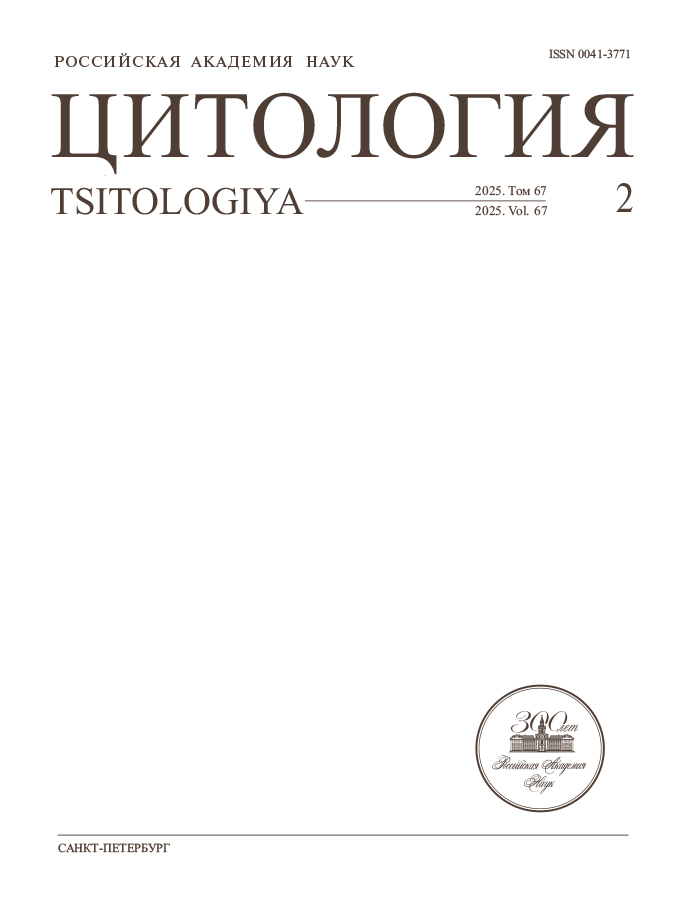Endoboost plus is the medium of choice for the cell mass expansion of ecfc isolated from adult blood
- Authors: Matveeva V.G.1, Shishkova D.K.1, Torgunakova Е.А.1, Kutikhin A.G.1
-
Affiliations:
- Research Institute for Complex Issues of Cardiovascular Diseases
- Issue: Vol 67, No 1 (2025)
- Pages: 20-29
- Section: Articles
- URL: https://edgccjournal.org/0041-3771/article/view/682170
- DOI: https://doi.org/10.31857/S0041377125010026
- EDN: https://elibrary.ru/DFELCO
- ID: 682170
Cite item
Abstract
Endothelial colony-forming cells (ECFC) have a powerful clonogenic and reparative potential, which makes them a promising material for cell therapy, experimental biology and medicine. The ability to rapidly expand the cell mass is the key to the use of ECFCs in these areas. We are developing the composition of nutrient medium for EndoBoost and EndoBoost Plus endothelial cells. Endothelial cell growth medium2 (EGM2) is recognised as the ‘gold standard’ in ECFC cultivation. The aim of our study was to comparatively evaluate the efficacy of EGM2, EndoBoost and EndoBoost Plus nutrient media for ECFC culture growth. Maximum proliferative activity of ECFC was detected in EndoBoost Plus medium, EndoBoost was found to be less active and the lowest result corresponded to EGM2. Thus, EndoBoost Plus is the preferred medium for cell culture of ECFCs isolated from adult peripheral blood.
Full Text
About the authors
V. G. Matveeva
Research Institute for Complex Issues of Cardiovascular Diseases
Author for correspondence.
Email: matveeva_vg@mail.ru
Russian Federation, 650002, Kemerovo
D. K. Shishkova
Research Institute for Complex Issues of Cardiovascular Diseases
Email: matveeva_vg@mail.ru
Russian Federation, 650002, Kemerovo
Е. А. Torgunakova
Research Institute for Complex Issues of Cardiovascular Diseases
Email: matveeva_vg@mail.ru
Russian Federation, 650002, Kemerovo
A. G. Kutikhin
Research Institute for Complex Issues of Cardiovascular Diseases
Email: matveeva_vg@mail.ru
Russian Federation, 650002, Kemerovo
References
- Athanassiades A., Hamilton G. S., Lala P. K. 1998. Vascular endothelial growth factor stimulates proliferation but not migration or invasiveness in human extravillous trophoblast. Biol. Reprod. V. 59. P. 643. https://doi.org/10.1095/biolreprod59.3.643
- Banno K., Yoder M. C. 2018. Tissue regeneration using endothelial colony-forming cells: promising cells for vascular repair. Pediatr. Res. V. 83. P. 283. https://doi.org/10.1038/pr.2017.231
- Barclay G. R., Tura O., Samuel K., Hadoke P. W., Mills N. L., Newby D. E., Turner M. L. 2012. Systematic assessment in an animal model of the angiogenic potential of different human cell sources for therapeutic revascularization. Stem Cell Res. Ther. V. 3. P. 23. https://doi.org/10.1186/scrt114
- Cai J., Jiang W. G., Ahmed A., Boulton M. 2006. Vascular endothelial growth factor-induced endothelial cell proliferation is regulated by interaction between VEGFR-2, SH-PTP1 and eNOS. Microvasc. Res. V. 71. P. 20. https://doi.org/10.1016/j.mvr.2005.10.004
- Cox C. M., D’Agostino S.L., Miller M. K., Heimark R. L., Krieg P. A. 2006. Apelin, the ligand for the endothelial G-protein-coupled receptor, APJ, is a potent angiogenic factor required for normal vascular development of the frog embryo. Dev. Biol. V. 296. P. 177. https://doi.org/10.1016/j.ydbio.2006.04.452
- Delcombel R., Janssen L., Vassy R., Gammons M., Haddad O., Richard B., Letourneur D., Bates D., Hendricks C., Waltenberger J., Starzec A., Sounni N. E., Noël A., Deroanne C., Lambert C., Colige A., 2013. New prospects in the roles of the C-terminal domains of VEGF-A and their cooperation for ligand binding, cellular signaling and vessels formation. Angiogenesis. V. 16. P. 353. https://doi.org/10.1007/s10456-012-9320-y
- Dragoni S., Laforenza U., Bonetti E., Lodola F., Bottino C., Berra-Romani R., Carlo Bongio G., Cinelli M. P., Guerra G., Pedrazzoli P., Rosti V., Tanzi F., Moccia F., 2011. Vascular endothelial growth factor stimulates endothelial colony forming cells proliferation and tubulogenesis by inducing oscillations in intracellular Ca2+ concentration. Stem Cells. V. 29. P. 1898. https://doi.org/10.1002/stem.734
- Kutikhin A. G., Tupikin A. E., Matveeva V. G., Shishkova D. K., Antonova L. V., Kabilov M. R., Velikanova E. A. 2020. Human peripheral blood-derived endothelial colony-forming cells are highly similar to mature vascular endothelial cells yet demonstrate a transitional transcriptomic signature. Cells. V. 9. P. 876. https://doi.org/10.3390/cells9040876
- Liao G., Zheng K., Shorr R., Allan D. S. 2020. Human endothelial colony-forming cells in regenerative therapy: a systematic review of controlled preclinical animal studies. Stem Cells Transl. Med. V. 9. P. 1344. https://doi org/10.1002/sctm.20-0141
- Lyons C. J., O’Brien T. 2020. The Functionality of Endothelial-Colony-Forming Cells from Patients with Diabetes Mellitus. Cells. V. 9. Art. ID: 1731. https://doiorg/10.3390/cells9071731
- Medina R. J., Barber C. L., Sabatier F., Dignat-George F., Melero-Martin J.M., Khosrotehrani K., Ohneda O., Randi A. M., Chan J. K.Y., Yamaguchi T., Van Hinsbergh V. W.M., Yoder M. C., Stitt A. W. 2017. Endothelial progenitors: a consensus statement on nomenclature. Stem Cells Transl. Med. V. 6. P. 1316. https://doiorg/10.1002/sctm.16-0360
- Pearson J. D. 2010. Endothelial progenitor cells — an evolving story. Microvasc. Res. V. 79. P. 162. https://doi.org/10.1016/j.mvr.2009.12.004
- Prasain N., Meador J. L., Yoder M. C. 2012. Phenotypic and functional characterization of endothelial colony forming cells derived from human umbilical cord blood. J. Vis. Exp. V. 13. Art. ID: 3872. https://doi.org/10.3791/3872
- Tura O., Skinner E. M., Barclay G. R., Samuel K., Gallagher R. C., Brittan M., Hadoke P. W., Newby D. E., Turner M. L., Mills N. L. 2013. Late outgrowth endothelial cells resemble mature endothelial cells and are not derived from bone marrow. Stem Cells. V. 31. P. 338. https://doi.org/10.1002/stem.1280
- Wang S., Li X., Parra M., Verdin E., Bassel-Duby R., Olson E. N. 2008. Control of endothelial cell proliferation and migration by VEGF signaling to histone deacetylase 7. Proc. Natl. Acad. Sci. USA. V. 105. P. 7738. https://doi.org/10.1073/pnas.0802857105
Supplementary files















